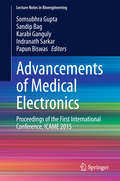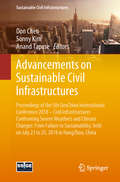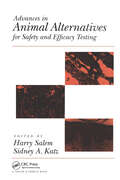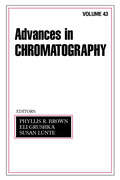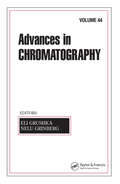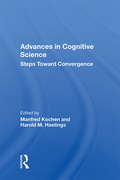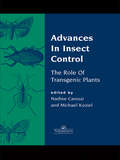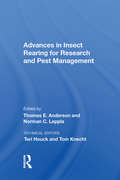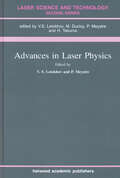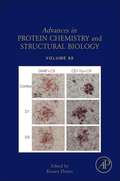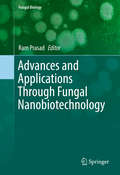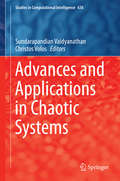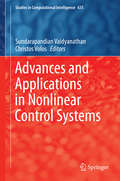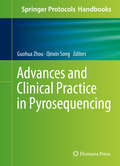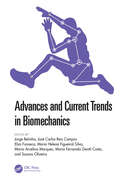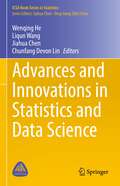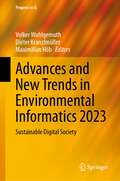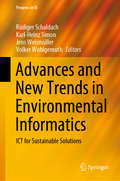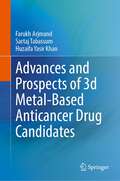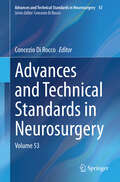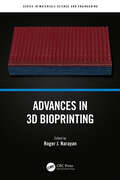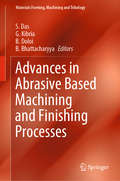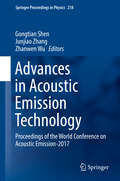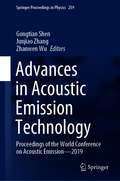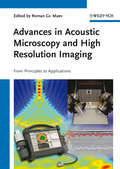- Table View
- List View
Advancements of Medical Electronics: Proceedings of the First International Conference, ICAME 2015 (Lecture Notes in Bioengineering)
by Somsubhra Gupta Sandip Bag Karabi Ganguly Indranath Sarkar Papun BiswasThe book is a collection of peer-reviewed scientific papers submitted by active researchers in the 1st International Conference on Advancements of Medical Electronics (ICAME2015). The conference is organized jointly by the Department of Biomedical Engineering and Electronics and Communication Engineering, JIS College of Engineering, West Bengal, India. The primary objective of the conference is to strengthen interdisciplinary research and its applications for the welfare of humanity. A galaxy of academicians, professionals, scientists, statesman and researchers from different parts of the country and abroad got together and shared their knowledge. The book presents research articles of medical image processing & analysis, biomedical instrumentation & measurements, DSP & clinical applications, embedded systems & its applications in healthcare. The book can be referred as a tool for further research.
Advancements on Sustainable Civil Infrastructures: Proceedings of the 5th GeoChina International Conference 2018 – Civil Infrastructures Confronting Severe Weathers and Climate Changes: From Failure to Sustainability, held on July 23 to 25, 2018 in HangZhou, China (Sustainable Civil Infrastructures)
by Don Chen Sonny Kim Anand TapaseThis book presents recent advances in the field of geomaterial and waste management. With high urbanization rates, advancement in technologies, and changes in consumer behavior, wastes generated through the daily activities of individuals and organizations pose many challenges in terms of their management. The studies presented in this book highlight attempts on the part of researchers and practitioners to address contemporary issues in geoenvironmental engineering such as the characterization of dredged sediments, geomaterials and waste, valorization of waste, sustainability in waste management, and various other geoenvironmental issues that are becoming increasingly relevant in today’s world. The studies were selected from papers presented at the 5th GeoChina International Conference, Civil Infrastructures Confronting Severe Weathers and Climate Changes: From Failure to Sustainability, held in Hangzhou, China on July 23–25, 2018.
Advances In Animal Alternatives For Safety And Efficacy Testing
by Sidney A. Katz Harry SalemPresents up-to-date concepts and approaches to the theory and practice of alternatives to animal testing and promotes technology transfer. The text addresses some of the ramifications of the National Institutes of Health Revitalization Act of 1993 which instructs the NIH to fund replacement, reduction and refinement alternatives. It also describes
Advances In Chromatography: Volume 43 (Advances in Chromatography)
by Eli Grushka Phyllis R. Brown Susan LunteFeaturing reliable, up-to-the-minute reviews of major developments in chromatography, Volume 43 studies the latest advances in the field with contributions and current research from world-renowned leaders in industry. It provides detailed discussions of current topics, issues, and developments in separation science and examining topics such as grad
Advances In Chromatography: Volume 44 (Advances in Chromatography)
by Nelu Grinberg Eli GrushkaFor more than four decades, scientists and researchers have relied on the Advances in Chromatography series for the most up-to-date information on a wide range of developments in chromatographic methods and applications. Volume 44 of this authoritative series once again compiles the work of expert contributors in order to present timely and cutting
Advances In Cognitive Science: Steps Toward Convergence
by Manfred Kochen Harold M. HastingsThis book includes a collection of papers on both natural (biological) and artificial (computer) approaches to several facets of intelligent behavior from the primary viewpoint of the convergence of computer science and biology in the theory of cognitive science. .
Advances In Insect Control: The Role Of Transgenic Plants
by Nadine Carozzi Michael KozielThe field of plant genetic engineering has arisen from the laboratory and into the market place as a technology to provide farmers and consumers with improved crops. 1996 marks a turning point as the first genetically engineered crops to control agronomically important pests are registered for commercial sale. In most cases it has taken over a deca
Advances In Insect Rearing For Research And Pest Management
by Thomas E AndersonThe efficient production of large numbers of high-quality insects is a concern both for basic research and for the success of control programmes for pests of agricultural and medical significance. This volume provides a comprehensive overview of this important issue, identifying the major applications for insect-rearing technology. The chapters, international in scope, cover genetics and molecular biology; insect rearing and the development of bioengineered crops; nutrition, digestion and artificial diets; and the practical concerns of commercial insect rearing.
Advances In Laser Physics (Laser Science and Technology)
by V. S. Letokhov P. MeystreThe birth of quantum electronics in the middle of the 20th century and the subsquent discovery of the laser led to new trends in physics and a number of photonic technolgies. This volume is dedicated to Peter Franken, a pioneer of nonlinear optics, and includes papers by the founders of quantum electronics, Aleksandr Prokhorov, Nicolaas Blombergen,
Advances In Protein Chemistry And Structural Biology: Inflammation in Neuropsychiatric Disorders Volume 88
by Rossen DonevPublished continuously since 1944, the Advances in Protein Chemistry and Structural Biology serial has been a continuous, essential resource for protein chemists. Covering reviews of methodology and research in all aspects of protein chemistry, including purification/expression, proteomics, modeling and structural determination and design, each volume brings forth new information about protocols and analysis of proteins while presenting the most recent findings from leading experts in a broad range of protein-related topics.
Advances and Applications Through Fungal Nanobiotechnology (Fungal Biology)
by Ram PrasadFungal nanobiotechnology has emerged as one of the key technologies, and an eco-friendly, as a source of food and harnessed to ferment and preserve foods and beverages, as well as applications in human health (antibiotics, anti-cholesterol statins, and immunosuppressive agents), while industry has used fungi for large-scale production of enzymes, acids, biosurfactants, and to manage fungal disease in crops and pest control. With the harnessing of nanotechnology, fungi have grown increasingly important by providing a greener alternative to chemically synthesized nanoparticles.
Advances and Applications in Chaotic Systems (Studies in Computational Intelligence #636)
by Sundarapandian Vaidyanathan Christos VolosThis book reports on the latest advances andapplications of chaotic systems. Itconsists of 25 contributed chapters by experts who are specialized in thevarious topics addressed in this book. The chapters cover a broad range oftopics of chaotic systems such as chaos, hyperchaos, jerk systems, hyperjerksystems, conservative and dissipative systems, circulant chaotic systems,multi-scroll chaotic systems, finance chaotic system, highly chaotic systems,chaos control, chaos synchronization, circuit realization and applications ofchaos theory in secure communications, mobile robot, memristors, cellularneural networks, etc. Special importance was given to chapters offeringpractical solutions, modeling and novel control methods for the recent researchproblems in chaos theory. This book will serve as a reference book for graduatestudents and researchers with a basic knowledge of chaos theory and controlsystems. The resulting design procedures on the chaotic systems are emphasizedusing MATLAB software.
Advances and Applications in Nonlinear Control Systems (Studies in Computational Intelligence #635)
by Sundarapandian Vaidyanathan Christos VolosThe book reports on the latest advances and applications of nonlinearcontrol systems. It consists of 30contributed chapters by subject experts who are specialized in the varioustopics addressed in this book. The special chapters have been brought out inthe broad areas of nonlinear control systems such as robotics, nonlinear circuits, powersystems, memristors, underwater vehicles, chemical processes, observer design,output regulation, backstepping control, sliding mode control, time-delayedcontrol, variables structure control, robust adaptive control, fuzzy logiccontrol, chaos, hyperchaos, jerk systems, hyperjerk systems, chaos control,chaos synchronization, etc. Special importance was given to chapters offeringpractical solutions, modeling and novel control methods for the recent researchproblems in nonlinear control systems. This book will serve as a reference book for graduate studentsand researchers with a basic knowledge of electrical and control systemsengineering. The resulting design procedures on the nonlinear control systemsare emphasized using MATLAB software.
Advances and Clinical Practice in Pyrosequencing (Springer Protocols Handbooks #0)
by Guohua Zhou Qinxin SongThe aim of this book is to improve pyrosequencing protocols as well as instrumentation for better clinical use by describing improvements and novel applications of pyrosequencing technology. Divided into five parts, the book's thirty chapters explore advances in pyrosequencing template preparation, pyrosequencing technology innovations, multiplex pyrosequencing based on barcodes, the miniaturization of pyrosequencing equipment, as well as various applications. As part of the Springer Protocols program, chapters contain the kind of detail and practical implementation advice to guarantee successful results in the lab. Comprehensive and thorough, Advances and Clinical Practice in Pyrosequencing serves as a valuable reference for researchers who are engaged in personalized medicine, disease control, and DNA diagnosis in numerous other fields.
Advances and Current Trends in Biomechanics: Proceedings of the 9th Portuguese Congress on Biomechanics, CNB2021, 19 - 20 February 2021, Porto, Portugal
by Jorge BelinhaThis volume presents a collection of peer-reviewed papers on several areas in the field of biomechanics, including biofabrication; biomaterials; cardiovascular biomechanics, biofluids and hemodynamics; biomechanics of the injury/impact; biomechanics of rehabilitation; sports biomechanics; biomechanics of the skull and spine; biomechanics of the musculoskeletal system; biomechanics orofacial; orthopaedic biomechanics; experimental and numerical biomechanics; tissue engineering, and biomedical devices. A collection of novelties and research outcomes presented at the 9th National Biomechanics Congress (CNB 2021, 19-20 February, Porto, Portugal), this book reflects the enthusiasm and intense activity of the Portuguese biomechanical community, as well as the multidisciplinary character of the field. The National Congress of Biomechanics (CNB) is a scientific meeting organized in Portugal under the auspices of the Portuguese Biomechanical Society (SPB).
Advances and Innovations in Statistics and Data Science (ICSA Book Series in Statistics)
by Jiahua Chen Wenqing He Liqun Wang Chunfang Devon LinThis book highlights selected papers from the 4th ICSA-Canada Chapter Symposium, as well as invited articles from established researchers in the areas of statistics and data science. It covers a variety of topics, including methodology development in data science, such as methodology in the analysis of high dimensional data, feature screening in ultra-high dimensional data and natural language ranking; statistical analysis challenges in sampling, multivariate survival models and contaminated data, as well as applications of statistical methods. With this book, readers can make use of frontier research methods to tackle their problems in research, education, training and consultation.
Advances and New Trends in Environmental Informatics 2023: Sustainable Digital Society (Progress in IS)
by Volker Wohlgemuth Dieter Kranzlmüller Maximilian HöbThis book is an outcome of the 37th International Conference EnviroInfo 2023, held at the Leibniz Supercomputing Centre (Munich, Germany), organized by the technical committee for Environmental Informatics of the German Informatics Society. It explores the fusion of information and communication technologies with environmental sustainability. As a flagship edition of the EnviroInfo conference series, it showcases the latest advancements in applied informatics and environmental informatics. With a focus on "Towards a Sustainable Digital Society," the conference presents innovative research on topics such as green computing, sustainable software engineering, and digital transformation. The proceedings cover essential subjects for shaping a greener future, including energy-efficient workloads, environmental management systems, legal frameworks, Earth observation, and geographical information systems. It also examines emerging technologies like robotics, AI, and reinforcement learning, highlighting their applications in environmental informatics. From citizen science to disaster risk modeling and sustainable resource management, the book explores the interdisciplinary nature of environmental informatics. It also addresses societal aspects, including its role in developing countries. This resource is essential for researchers, professionals, and policymakers seeking to leverage ICT for addressing environmental challenges and building a sustainable digital society.
Advances and New Trends in Environmental Informatics: ICT for Sustainable Solutions (Progress in IS)
by Volker Wohlgemuth Jens Weismüller Rüdiger Schaldach Karl-Heinz SimonThis book is an outcome of the 33rd International Conference EnviroInfo 2019, held at the University of Kassel, Germany. It presents a selection of papers that describe innovative scientific approaches and ongoing research in environmental informatics and the emerging field of computational sustainability. The respective articles cover a broad range of scientific aspects including advances in core technologies such as earth observation, environmental modelling, big data and machine learning, as well as applications of ICT solutions intended to support societal transformation processes toward the more sustainable management of resource use, transportation and the energy supply. Given its scope, the book is essential reading for scientists, experts and students in these fields of research.
Advances and Prospects of 3-d Metal-Based Anticancer Drug Candidates
by Farukh Arjmand Sartaj Tabassum Huzaifa Yasir KhanThis book reviews the potential of metallodrugs against different cancer. It summarizes the classification of metal-based anti-cancer drugs, their plausible biochemical and mechanistic pathways, combining drug strategies for hitting multiple therapeutic targets at the intracellular level, and advanced drug delivery strategies. The book covers the metallodrugs for the efficacious treatment of diverse cancerous strains and recent advances in drug delivery strategies that are used for developing these metal-based therapeutics as potent anticancer agents in vitro and in vivo. The book also covers different biophysical and analytical techniques for studying metal-ligand and metal-macromolecular interactions. The book further presents the recent examples of metallomics studies on the different types of cell death induced by metal-based anticancer drugs, especially on the three major forms of programmed cell death (PCD) in mammalian cells: apoptosis, autophagy, and regulated necrosis, alsocalled necroptosis. Lastly, the book explores the modulation of reactive oxygen species (ROS) by metallodrugs.
Advances and Technical Standards in Neurosurgery: Volume 53 (Advances and Technical Standards in Neurosurgery #53)
by Concezio Di RoccoThis book presents a comprehensive update on some crucial aspects of brain and spinal tumoral pathology that strongly influence the current surgical management. It covers a range of topics, from the latest results of molecular diagnosis for tumors still considered unsuitable for surgical excision, to the increasing use of minimally invasive approaches made possible by the wide application of neuroendoscopic techniques. The first three chapters discuss basic research on the potential benefits of new, less invasive and more sophisticated techniques for brain exploration. The following four chapters examine how modern instruments for intraoperative visualization are modifying the traditional paradigm of classical neurosurgery. Two chapters describe he recent understanding of two of the most relevant intracranial tumors that still pose challenges for successful treatment, namely the tumor of the pineal region and ependymomas. Two more chapters are devoted to the management of brain tumors, the first exploring the valuable information that can be derived from biopsy when properly carried out, and the second detailing an innovative therapeutic modality that increases the intratumoral level of antineoplastic agents while minimizing body toxicity and side effects. The book also delves into congenital or acquired malformations of the brain, the skull base, and the cranial vault in three of its remaining chapters. Finally, the last chapter addresses the traumatic pathology of the spine, whose etiology and management have changed significantly in recent years.
Advances in 3D Bioprinting (Series in Materials Science and Engineering)
by Roger J. Narayan"3D bioprinting" refers to processes in which an additive manufacturing approach is used to create devices for medical applications. This volume considers exciting applications for 3D bioprinting, including its use in manufacturing artificial tissues, surgical models, and orthopedic implants.The book includes chapters from leaders in the field on 3D bioprinting of tissues and organs, biomedical applications of digital light processing, biomedical applications of nozzle-free pyro-electrohydrodynamic jet printing of buffer-free bioinks, additive manufacturing of surgical models, dental crowns, and orthopedic implants, 3D bioprinting of dry electrodes, and 3D bioprinting for regenerative medicine and disease modeling of the ocular surface.This is an accessible reference for students and researchers on current 3D bioprinting technology, providing helpful information on the important applications of this technology. It will be a useful resource to students, researchers, and practitioners in the rapidly growing global 3D bioprinting community.
Advances in Abrasive Based Machining and Finishing Processes (Materials Forming, Machining and Tribology)
by B. Bhattacharyya S. Das G. Kibria B. DoloiThis book presents the advances in abrasive based machining and finishing in broad sense. Specifically, the book covers the novel machining and finishing strategies implemented in various advanced machining processes for improving machining accuracy and overall quality of the product. This book presents the capability of advanced machining processes using abrasive grain. It also covers ways for enhancing the production rate as well as quality. It fulfills the gap between the production of any complicated components and successful machining with abrasive particles.
Advances in Acoustic Emission Technology: Proceedings of the World Conference on Acoustic Emission-2017 (Springer Proceedings in Physics #218)
by Gongtian Shen Zhanwen Wu Junjiao ZhangThis volume collects the papers from the World Conference on Acoustic Emission 2017 (WCAE-2017) in Xi'an, China. The latest research and applications of acoustic emission (AE) are explored, with a particular emphasis on detecting and processing AE signals, the development of AE instrument and testing standards, AE of materials, engineering structures and systems, including the processing of collected data and analytical techniques. Numerous case studies are also included. This proceedings volume will appeal to students, professors and researchers working in these fields as physicists and/or engineers.
Advances in Acoustic Emission Technology: Proceedings of the World Conference on Acoustic Emission—2019 (Springer Proceedings in Physics #259)
by Gongtian Shen Zhanwen Wu Junjiao ZhangThis book presents articles from the World Conference on Acoustic Emission 2019 (WCAE-2019) held at Guangdong, China. The latest research and applications of acoustic emission (AE) are explored, with a particular emphasis on detecting and processing AE signals, the development of AE instrument and testing standards, AE of materials, engineering structures and systems, including the processing of collected data and analytical techniques. Numerous case studies are also included. It brings together leading academicians and professionals in the field to foster collaboration and to enhance research in this important area, with wide ranging applications.
Advances in Acoustic Microscopy and High Resolution Imaging
by Roman Gr. MaevNovel physical solutions, including new results in the field of adaptive methods and inventive approaches to inverse problems, original concepts based on high harmonic imaging algorithms, intriguing vibro-acoustic imaging and vibro-modulation technique, etc. were successfully introduced and verified in numerous studies of industrial materials and biomaterials in the last few years. Together with the above mentioned traditional academic and practical avenues in ultrasonic imaging research, intriguing scientific discussions have recently surfaced and will hopefully continue to bear fruits in the future. The goal of this book is to provide an overview of the recent advances in high-resolution ultrasonic imaging techniques and their applications to biomaterials evaluation and industrial materials. The result is a unique collection of papers presenting novel results and techniques that were developed by leading research groups worldwide. This book offers a number of new results from well-known authors who are engaged in aspects of the development of novel physical principles, new methods, or implementation of modern technological solutions into current imaging devices and new applications of high-resolution imaging systems. The ultimate purpose of this book is to encourage more research and development in the field to realize the great potential of high resolution acoustic imaging and its various industrial and biomedical applications.
